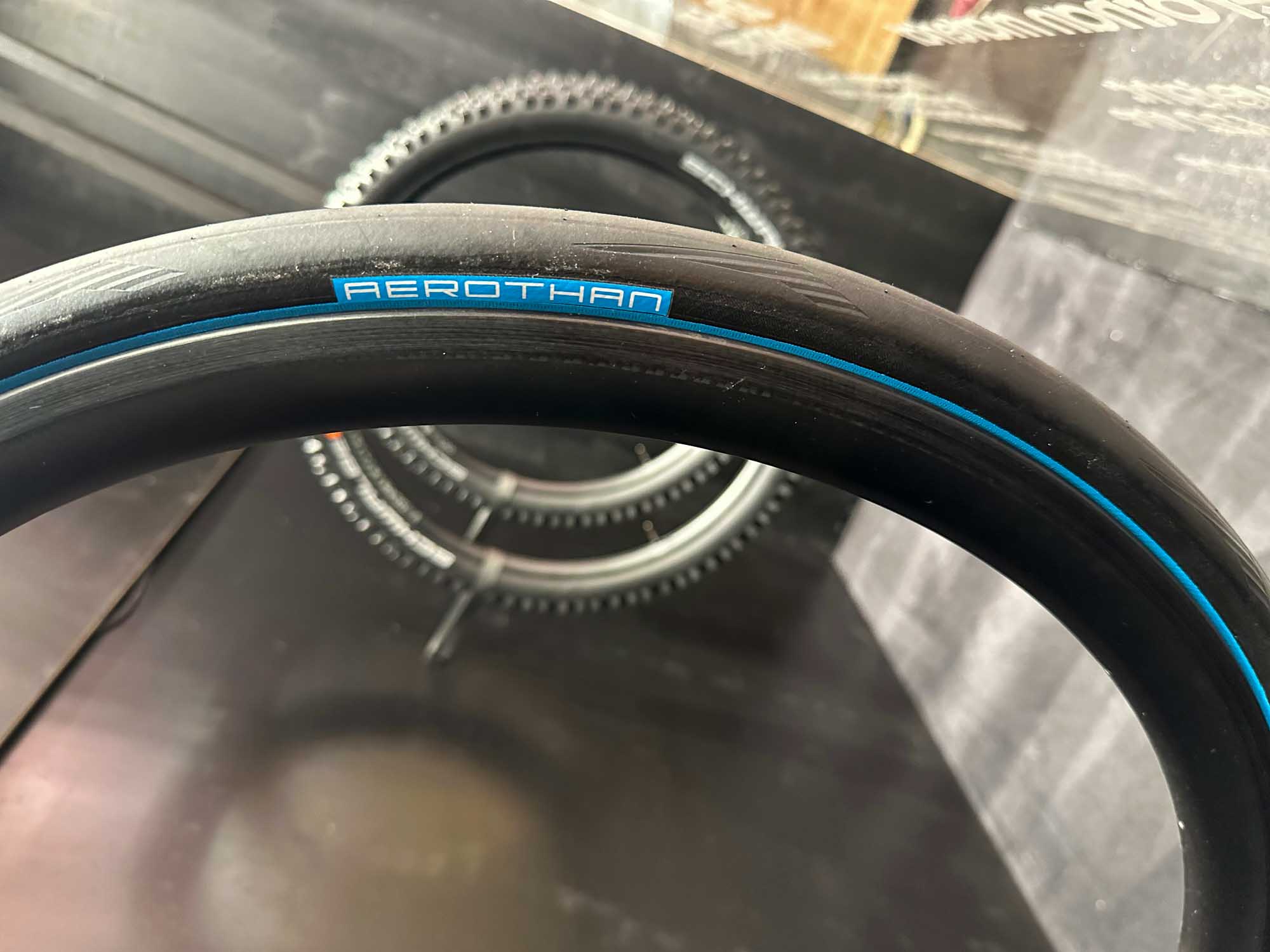Schwalbe has certainly been busy lately. There’s new Tacky Chan DH tires, 70% recycled content commuter tires, plus an all-new logo and branding.
As if that wasn’t enough, Schwalbe was showing a few additional concepts at Eurobike including the eye-popping Aerothan road tire concept. The eye-popping bit comes from the weight of the tires, since it otherwise looks like a normal Schwalbe road tire. That’s due to the fact that even though this tire replaces the rubber in the casing with their Aerothan nylon-coated TPU material, it still uses traditional rubber tread to maintain the traction you expect out of a high-performance tire.
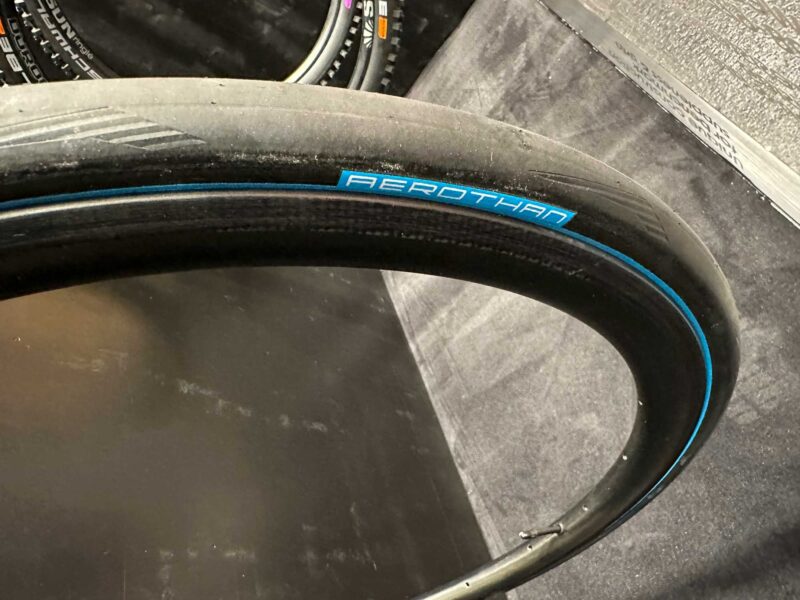
By replacing the rubber in the casing with TPU, Schwalbe is able to claim a weight as low as 165g for a road tire. Perhaps more importantly than the weight, the tube-type-only Aerothan casing results in a super low rolling resistance, a more supple ride, and puncture protection on par with tubeless tires. If all that turns out to be true, all of a sudden you have a better option for riders who haven’t yet adopted tubeless road.
As an added bonus, the tire could also be 100% recyclable. We’re told that the Aerothan tire concept could be just a year out.
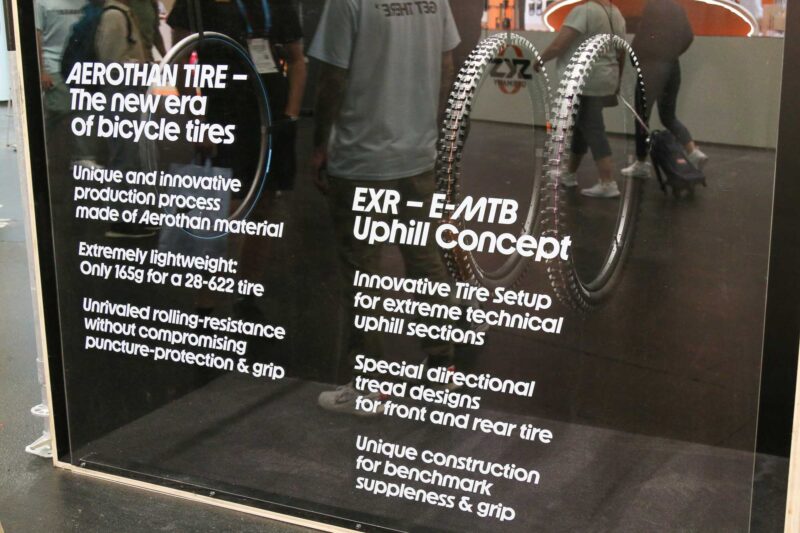
On the eMTB side, Schwalbe was showing what they call their eMTB Uphill Concept.
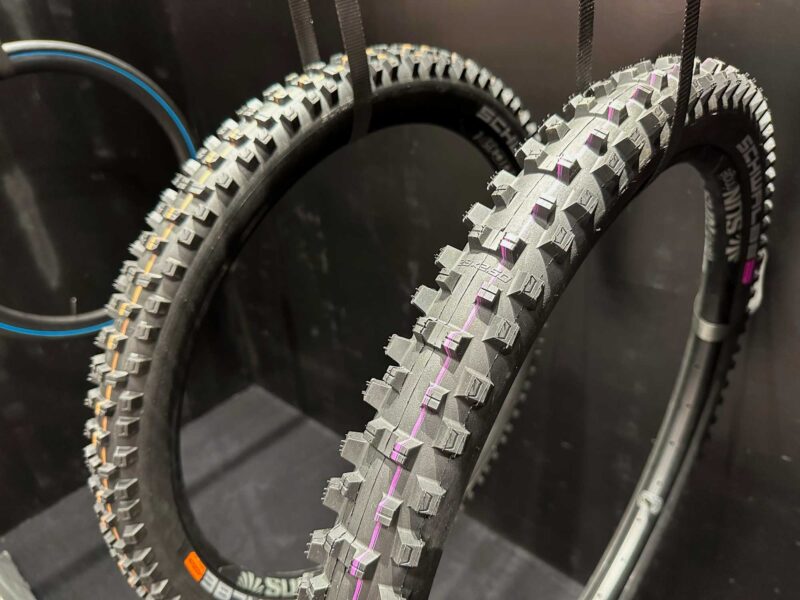
Obviously, the tires will still be designed to perform while riding downhill, but now more attention is given to the tread design for uphill riding. The thought is that since it’s an ebike, you don’t have to worry as much about ramped tread designs that decrease rolling resistance and make it easier to pedal.
Instead, you can design the leading edges of the tread blocks to provide better grip when climbing. The tread patterns will be directional with uphill and downhill-focused tread blocks for better traction all around.
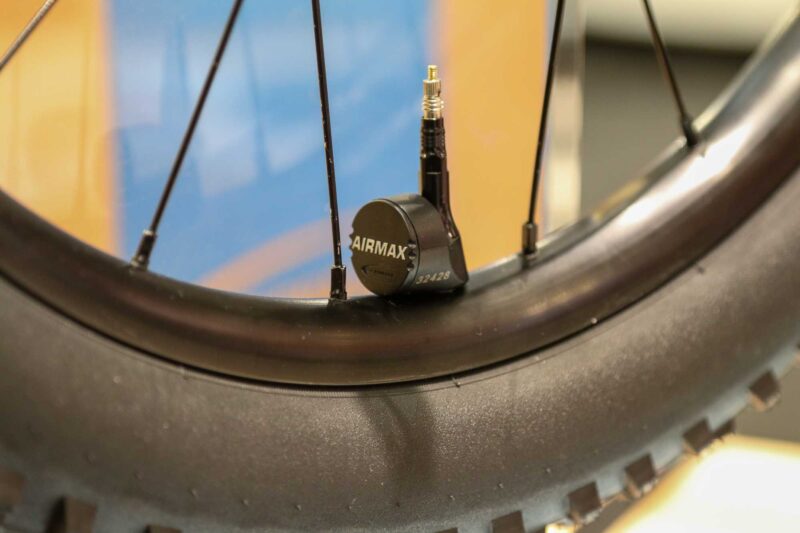

Finally, Schwalbe was showing their new Airmax Tire Pressure Monitoring System. The Airmax valve mounts to any standard presta rim, and offers real-time tire pressure monitoring with the Schwalbe Airmax app. The app allows you to set an optimum value, so it will send you and alert if the tire pressure deviates. The valves can be connected to GPS computers from Garmin and Wahoo, so if you’re riding or racing, you can get a real-time alert that you might have a slow leak giving you time to get to the pit, or stop to find the hole and plug it before you lose all the air.
The app also guides you to their Pressure Prof tire pressure guide allowing you to dial in your ideal tire pressure settings. The app is availalble now, and the valves will be coming soon.
